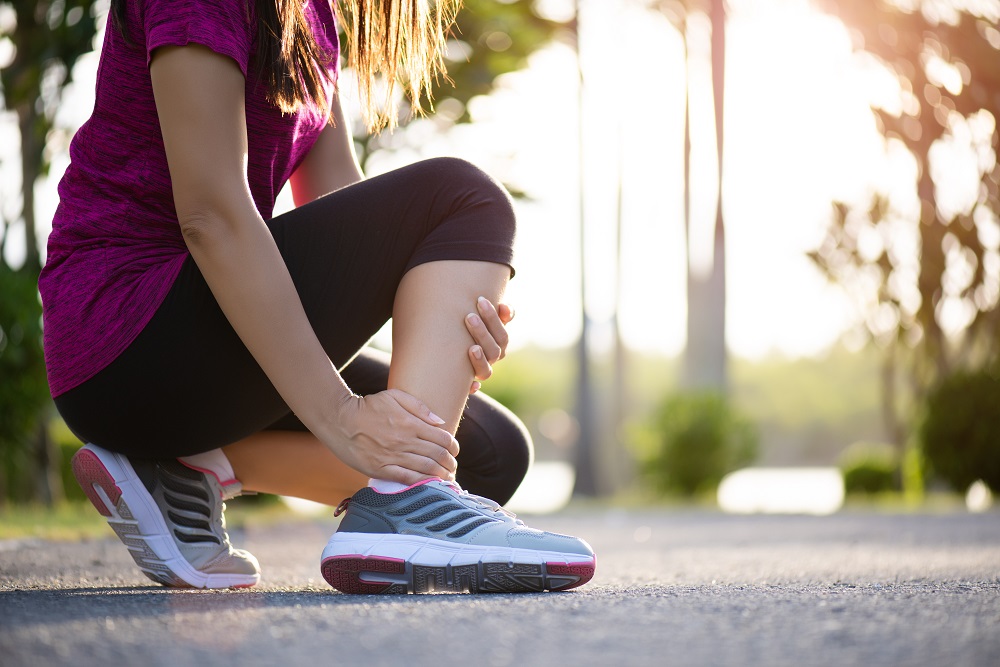If your shins hurt after your daily run or after performing a quick jog, you may be experiencing medial tibial stress syndrome, or what is more commonly referred to as shin splints. Shin splints are commonly seen in jumping and running athletes, as well as in military personnel, however many individuals are stumped as to the best way to treat them, and it is often very unclear as to which treatments are the most effective. This blog will help you to have a better understanding of what medial tibial stress syndrome actually is, and explain what the most up-to-date research is saying about treatment.
What is Medial Tibial Stress Syndrome?
Medial tibial stress syndrome (MTSS) is defined as pain that occurs on the inner edge of the shin bone, or Tibia. The reason that this syndrome is not truly called shin splints is that “shin splints” can actually be used to define any issue of the lower leg bone including injuries to different muscles in the area, stress fractures, or compartment syndromes. MTSS more specifically describes the recurring dull ache along the inner part of the lower two-thirds of the tibia. With MTSS, there is inflammation at the site where the muscles in the lower leg attach to the bone. Individuals who develop MTSS often find that they have pain after activity, tenderness along the inside of the tibia, and pain with ankle movements. Individuals may also notice that they have more of a flat foot since this syndrome is commonly associated with over-pronation of the feet.
What Causes MTSS?
Medial tibial stress syndrome is considered to be an overuse injury, meaning that there are many factors that can contribute to the slow increase in pain over time. These factors include foot biomechanics, muscle imbalances, training errors, overuse, poor footwear, and hard surfaces. There are 4 grades of MTSS that can be determined based on the symptoms that a patient is reporting. Stage 1 occurs when the individual experiences pain after activity. Stage 2 is when there is pain before and after activity; however, the pain does not affect performance. Stage 3 occurs when there is pain before and after activity and the individual feels that their performance is affected. Finally, stage 4 is when the pain is so severe that performance is impossible. To break it down further, pain that occurs more in the front of the tibia is considered to occur when people take up a new activity that requires quick start and stops. This unfamiliar movement puts strain on the muscles of the shin and they become inflamed. Running downhill or on the balls of your feet can also cause this anterior pain. Pain that is felt more toward the back, or posteriorly, is often a result from muscle imbalances.
How is MTSS Treated?
Unfortunately, it is difficult to determine the best treatment for MTSS since so many factors may play a role. First and foremost, it is recommended that individuals use rest and ice to control inflammation, and ensure a safe training program that only increases 10% every week. Current research that looked at the use of iontophoresis, phonophoresis, ice massage, ultrasound, low-energy laser treatment, periosteal pecking, stretching and strengthening exercises, sports compression stockings, and lower leg braces found that none of these interventions had a significant impact on the patients time to recovery, however many of them did have a positive impact on patient’s pain levels. Another study found that providing deep tissue massage to the affected muscles was a quick and effective option to relieve patients of pain and restore their exercise tolerance. Finally, different taping techniques and orthotics may also be used to address pain and biomechanical issues.
Overall, there are many options that may help with MTSS pain, and working with a physical therapist can be a great way to determine which treatment options are best for you!

